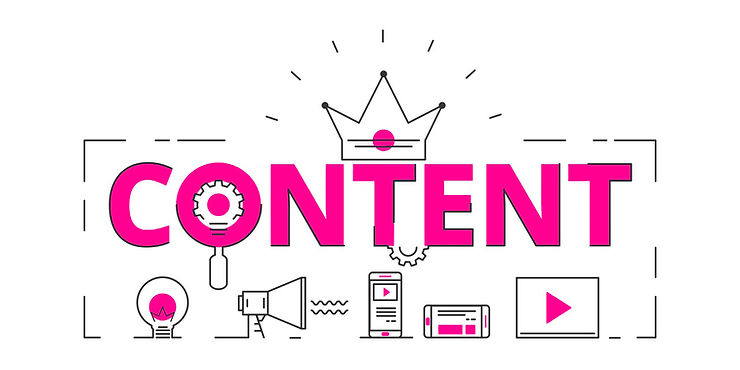Are you wanting to increase your online presence and not sure where to start? Do you find online advertising confusing? Are you ready to set up a Google #Adwords campaign? We can demystify the process and help you create a plan that works for you. Here are a few fundamentals to help you get started.
Basic Terms
Keywords: Words or phrases people type into a Google search. You should plan your keywords around what you think your clients or potential buyers will search for.
Bids: The most your are willing to pay per click. Google works like an auction – for example, if you bid $1.00 as the maximum you will pay per click and your competitor bids $1.10, they will show up ahead of you.
Quality Score: How relevant are your #keywords and your landing page. When people click on your ad, does it consistently give them the information they are looking for?
Ad Rank: Where will your ad show up in relation to other ads? Ad Rank is calculated based on your bid amount, your auction-time ad quality.
Two Main Campaign Types: Search and Display
Search campaigns come up when someone searches for relevant keywords. They are the three-line text ads that show up at the top of the page when you search for something.
Display ads are the image ads that pop up after someone has visited your website.
I suggest starting with a mix of both, monitor what is performing best for your and adjusting your strategy accordingly.
Goals
Set your campaign goals. Do you want an increase in site visitors? Do you want people to phone? Do you want to increase brand awareness?
Keywords
Create a list of keywords that you would like to include as part of the campaign. You don’t need hundreds. You can adjust this depending on which words are performing well. Add to the list as needed.
Additionally, you will need a list of negative keywords. For example, if you sell athletic shoes, negative keywords could include types of shoes you don’t sell, such as heels or brogues.
Keyword Match Types
Broad Match Modifier:
This setting allows you to specify which words are compulsory for your ad to show up. For example, you might want shoes to always show up, if you are an athletic shoe store. Vis-à-vis athletic therapy or athletic wear.
Phrase Match:
This option shows your ad for searches that contain your exact keyword in a search phrase. For example, your keyword could be athletic shoes, and someone may search for “athletic shoes for women.”
Exact Match:
If you choose exact match, your ad will only show if someone searches for the exact word or phrase you choose.
Negative Match:
Allows you to weed out phrases or words that may trigger your ad but are not relevant.
Break Down Your Campaigns According to Your Business Departments
If your business has two or more clearly different departments, for example, sales and service; it makes the most sense to do a separate campaign or campaigns for each segment. You can decide what geographical areas you want to target for each, and how much of your budget you wish to allocate for each area. And of course run different ads for each.
Budget
You can choose to do a #PPC or #CPC (Cost Per Click or Pay Per Click, same thing) or a #CPI (Cost Per Impression) Campaign. The type of payment you wish to set up should reflect your campaign goals.
You can set your budget for as much or as little as you want. You should start with a test budget, for example, $500 – $1,000 dollars a month, for a mid-sized business. You can calculate your test budget approximately by multiplying the number of keywords you want to test by the cost per click and by a minimum of 100 clicks.
You will likely have a mix of winning and losing keywords, ads and landing pages from this initial test. As you continue to monitor your results you can adjust your campaign accordingly, keeping words that are working for you and dropping words that are under performing.
You can set a maximum amount you will pay for your clicks. Google works like an auction, so if you have bid $2.00 a click and your competitor bids $2.10, they will show up ahead of you. A very rough average of what you will likely spend is around $1.00 – $2.00 a click. There are a lot of variables, so it’s hard to know exactly until you try.
When your budget runs out, your ads will stop running. So, if you end up using your budget by the 15th of the month, you may wish to consider spending more.
Devices
Do your customers typically search on a desktop or mobile device? Are you targeting people who are doing product research or people who are looking to make an immediate purchase?
Writing Ads
Your ad is your first impression – it should actually contain the words people are searching for. You should write your ads according to your ad groups, for example running shoes or basketball sneakers. The more relevant your ads are to the search, the higher your quality score.
Landing Page
It is best practice to set up a landing page that people are directed to, rather than the home page of your site. This will contain copy that is relevant to the ad they clicked on and a short form for them to fill out. Here are a couple examples:
https://aerohealthcare.us.com/aero-cleanse-hand-sanitizer-gels
Let’s Get Started
Contact Big D for a free consultation! We will review your market and targets and flesh out plan that will work for you. Email us at info@bigdinternational.com and we’ll set up a mutually convenient time. Our availability may vary depending on blizzards, Canadian holidays (almost every Monday) and ever fluctuating covid-19 rules and regulations. (Hey Trudeau, cut us some slack!)







